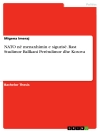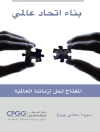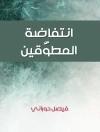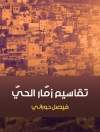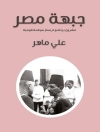This book charts John W. Burton’s transition from practitioner in diplomacy to pioneer in the theory of peace research, thinking on world society and conflict resolution. Born in 1915, given his father’s name, it was assumed that he would follow his father and become a Christian missionary. He did not: he joined the Australian Public Service. From a junior position he rose rapidly. He was forthright and some found him irritating, or worse. He progressed to the highest levels of policy-making. Amidst some controversy, he resigned abruptly in 1951. He then worked on his farm outside Canberra, writing avidly. He did not intend to become an academic, but in 1963 he was offered a position in International Relations at University College in London and he accepted. He was key to the foundation of the International Peace Research Association (IPRA) in 1964 and of the Conflict Research Society in the UK, because he thought that words and ideas were not enough: there needed to be instrumentsof change. Looking back, he was, in fact, a secular missionary. His aim? Simple: to change the world.
· This book is an exploration of how conflict should be reinterpreted.
· The ideas of his work are a product not of any metaphysical approach, but of experience.
· Burton knew the field: Cold War diplomacy, civil strife, reforming organisations, resistance to change. He had ‘been there’ and he found much to criticise.
· This book illustrates what he had to offer and explains why. These readings reveal shifts in his ideas, cohering incrementally, integrated into a new framework.
· This book presents his pioneering and relevant work. Transcending disciplinary boundaries it will be of interest to students, as well as professionals who address conflict at all levels of society, from family to state.
Cuprins
Part 1. On John W. Burton.- Chapter 1. John W. Burton: From Cold War Politics to Peace Research Pioneer.- Chapter 2. John W. Burton: A Bibliography.- Part II. John. W. Burton Key Texts on International Relations and Peace Research.- Chapter 3. The Alternative (1954).- Chapter 4. The Problem Stated: Forms of Conflict (1962).- Chapter 5. Peace Research and ‘International Relations’ (1964).- Chapter 6. From Power to Steering (1965).- Chapter 7. Conflict as a Function of Change (1966).- Chapter 8. Restatement and Propositions (1968).- Chapter 9. Assessment (1969).- Chapter 10. Resolution of Conflict (1972).- Chapter 11. Some Further Comments – in Reply to Criticism (1972).- Chapter 12. Conceptualizing and models (1972).- Chapter 13. Discussion: Theory and Reality (1975).- Chapter 14. Problem-Solving (1979).- Chapter 15. The Role of Authorities in World Society (1979).- Chapter 16. Needs Theory Applied to Political Relations (1982).- Chapter 17. The History of International Conflict Resolution (1985).- Chapter 18. Unfinished Business in Conflict Resolution (1990).- Chapter 19. Conflict Resolution as a Political Philosophy (1993).- Chapter 20. Conflict Provention as a Political System (1995).- Chapter 21. The Language of Conflict Resolution (1996).- Chapter 22. Civilizations in Crisis: From Adversarial to Problem-Solving Processes (1996).- Chapter 23. Needs Theory (1997).- Chapter 24. Conflict Resolution: Towards Problem-solving (1997).- Chapter 25. Conflict Resolution: The Human Dimension (1998).- Chapter 26. Peace Begins at Home (2001).- Chapter 27. Conflict Provention as a Political System (2001).- Chapter 28. Where do we go from here (2001).- Part III. Comments on John W. Burton’s Work.- Chapter 29. Conflict Research Avant la Lettre.- Chapter 30. John Burton’s Contribution to Conflict Resolution Theory and Practice: A Personal View.- Chapter 31. From Controlled Communication to Problem Solving: The Originsof Facilitated Conflict Resolution.- Chapter 32. Relevance of Burton’s Theory and Practice for 21st Century Conflict Transformation?.- Backmatter.- Index.
Despre autor
David J. Dunn was a student of Burton at University College, London. After postgraduate study in the United States and London, he taught International Relations and Security Studies, principally at the Universities of Staffordshire and, latterly, Keele, where he was an Honorary Senior Research Fellow, before retirement several years ago. He has written several articles about Burton. A major treatment of his work appeared in 2004.
Hans Günter Brauch was a foreign student of Burton at University College, London. He obtained a Dr. phil. degree at Heidelberg University and a habilitation at the Free University of Berlin. He was a post-doctoral research associate at Harvard and Stanford Universities, a research associate and a guest professor at universities in Germany, Thailand and Malaysia and an adjunct professor (PD) at the Free University of Berlin. He is chairman of an international scientific NGO (AFES-PRESS) and of the HGB-Foundation on Peace and Ecology in the Anthropocene(HGBS).
Pamela Burton, BA.LLM (ANU), is the youngest daughter of John Burton (Jn). Her undergraduate studies included international relations and international law. In the course of 50 years running her own legal practice and later as a barrister, Pamela chaired or was a member of various Federal and ACT boards and tribunals. She is currently a full-time writer and a part time court mediator. Pamela has authored From Moree to Mabo: the Mary Gaudron Story (UWAP, 2010), The Waterlow Killings: A portrait of a family tragedy (MUP, 2012) and A Foreign Affair (Ginninderra Press, 2016). Her recent book, assisted by her sister Meredith Edwards, Persons of Interest: An intimate account of Cecily and John Burton (ANU Press, 2022), is a frank account of the personalities and lives of their parents.


